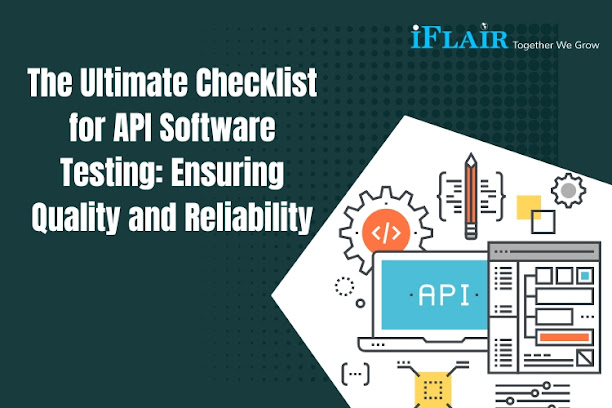The Ultimate Checklist for API Software Testing: Ensuring Quality and Reliability
Introduction:
In the
contemporary digital era, APIs (Application Programming Interfaces) have grown
to be an essential part of software development. An API, which is a collection
of protocols, tools, and processes, is a means through which software
programmes may communicate with one another. The adoption of APIs has increased
need for trustworthy and efficient API software testing.
In this case, API testing services may be helpful. In order to ensure quality
and dependability, this blog article will go over the extensive checklist for
testing API applications.
Specify the testing parameters.
Determining
the scope of the testing is the first stage in API software testing. This
entails determining the APIs that require testing, the functionality that needs
to do software testing manual, and
the anticipated outcomes.
Choose a testing setting
The testing
environment should be as similar to the production environment as is practical.
This includes both the hardware and software as well as the network settings.
Furthermore, the testing environment need to have test data that accurately
mimics production data.
Choose the appropriate API testing tools.
Both
open-source and paid API testing tools are widely accessible. Postman, SoapUI,
and JMeter are a few of the frequently used API testing tools.
Examine the functionality.
Examine the
API's features, including response time, error handling, and data validation.
Make sure that the API Software Testing Services responds with the anticipated outcome in each case.
Verify security
It is
crucial to test for security flaws because APIs are frequently the target of
cyberattacks. Every layer of the API, including the network, application, and
database, should be security-tested.
APIs must be
quick and responsive; test for performance. By monitoring the response time,
throughput, and concurrency, evaluate the API's performance. Do performance
testing using technologies like JMeter and LoadRunner?
Verify the scalability
APIs with
scalability are required to handle increasing demands. You may evaluate the
API's scalability by simulating a high number of concurrent users and requests.
Analyze the compatibility
APIs must
function properly across a range of hardware, software, and browsers. Run the
API on various hardware and software to check for compatibility.
Verify the documentation
Developers
need API documentation to comprehend the functionality of the API and how to
utilize it. Verify the documentation's precision and thoroughness.
Check the usability
APIs ought
to be easy to use and understand. Check the usability of the API by looking at
the user interface, error messages, and user experience.
APIs are
frequently integrated with other software programs. Check for integration.
Check the API's compatibility with other programs to see whether it can be
integrated.
Verify the versioning
Over time,
APIs change, and new versions are introduced. Check the API's backward
compatibility and make sure the new version doesn't affect any already-existing
functionality before using it for versioning.
Conclusion:
In order to guarantee the excellence and dependability of APIs, API software testing is crucial. You may thoroughly test your APIs and make sure they adhere to the appropriate requirements by using the preceding checklist. You may use API testing services to implement this criterion and make sure your APIs are of a high caliber. Make sure your APIs are adequately tested before going into production by selecting a reputable API testing service provider that fits your needs and budget.




Comments
Post a Comment